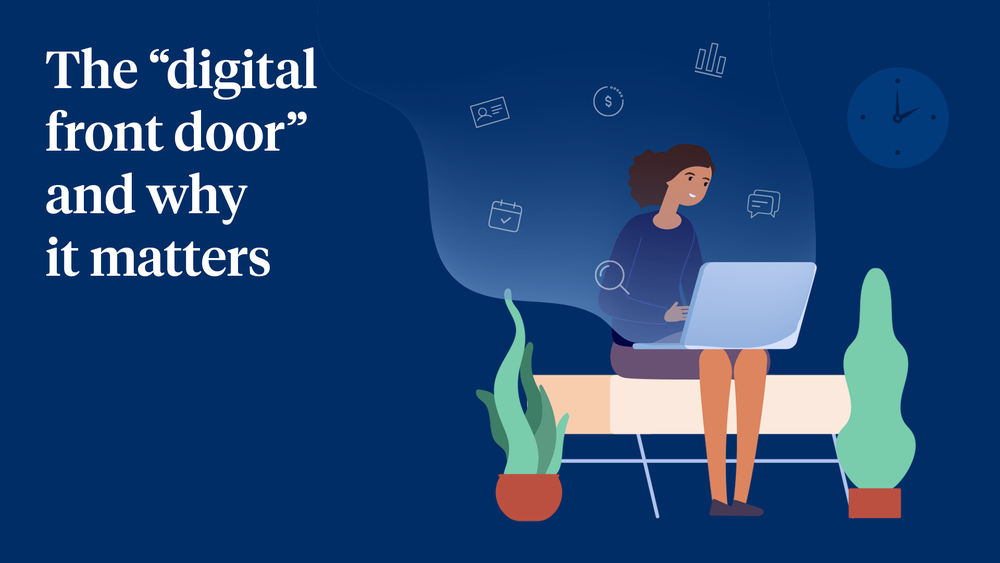In our “new normal” spurred by COVID-19, patients are accessing healthcare and engaging with providers in ways that seemed far-fetched only months ago. In-person is out, virtual is in and “digital front door” strategies have never been so crucial.
The “digital front door”—a reference to the sum of all ways in which medical providers digitally interact with patients outside the point of care—has become a ubiquitous concept in healthcare over the last few years. The term (and the ever-increasing value attached to it) has emerged alongside an dramatic rise in digital age consumer expectations.
Leading retail companies like Amazon, Apple and Zappos have set the bar so high that exceptional end-to-end digital experiences are now table stakes. Against healthcare’s backdrop, this expectation is fused with the undeniable rise in patient cost-sharing, unstoppable technology trends and emerging threats from industry challengers. Consequently, it’s clear that digital front door optimization is no longer optional for would-be leaders in the healthcare industry – it’s an integral part of the patient engagement strategy accompanying the healthcare journey.
Because consumers face a nearly limitless landscape of digital access points that vie for attention, strategic healthcare leaders must also understand that the question of digital engagement isn’t a quantitative one but a qualitative one. Rather than just providing more digital access, providers must provide a singular cohesive, consolidated and consumer-centric digital access point for all patient interactions. Unfortunately, all too many portals fail to live up to this potential.



